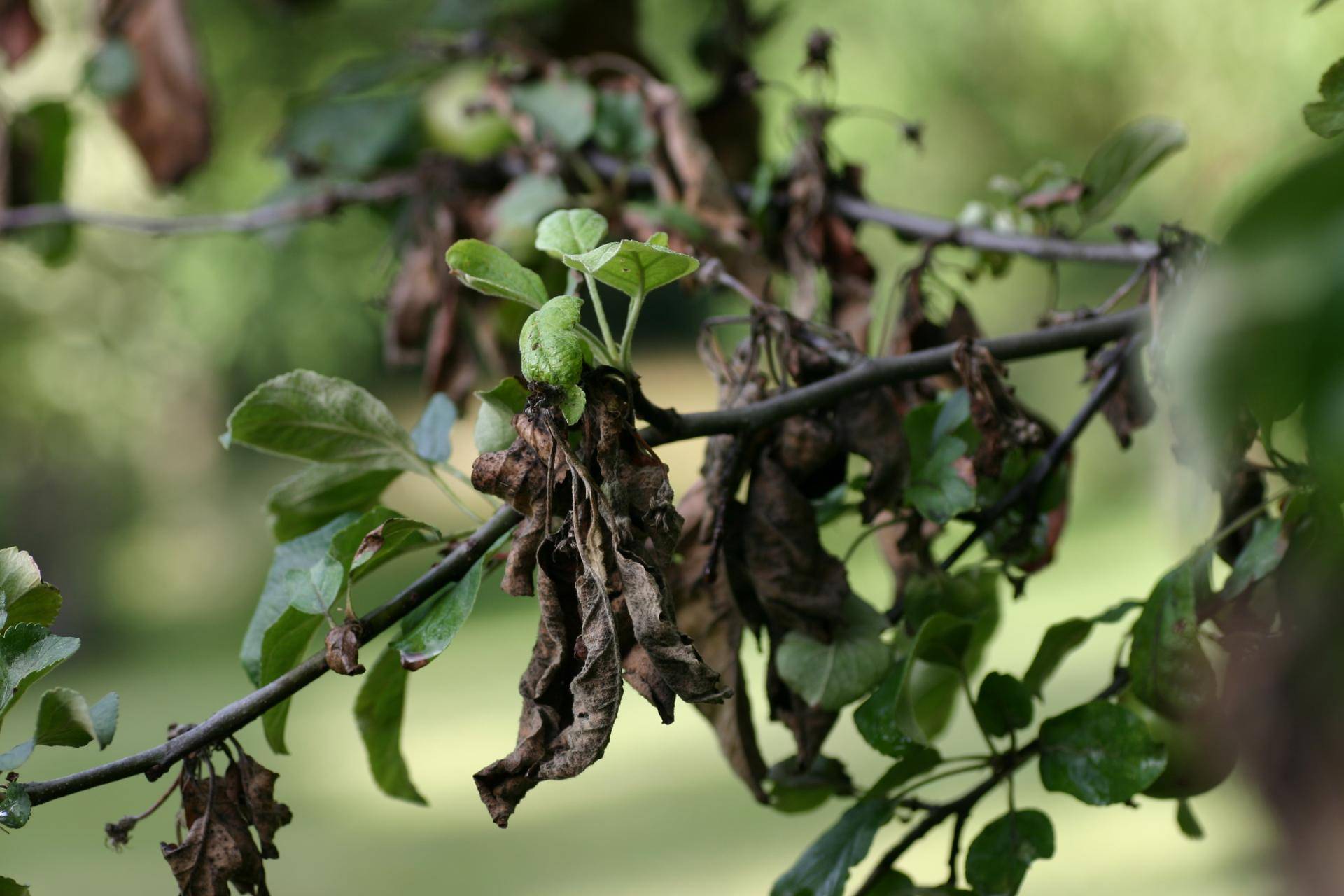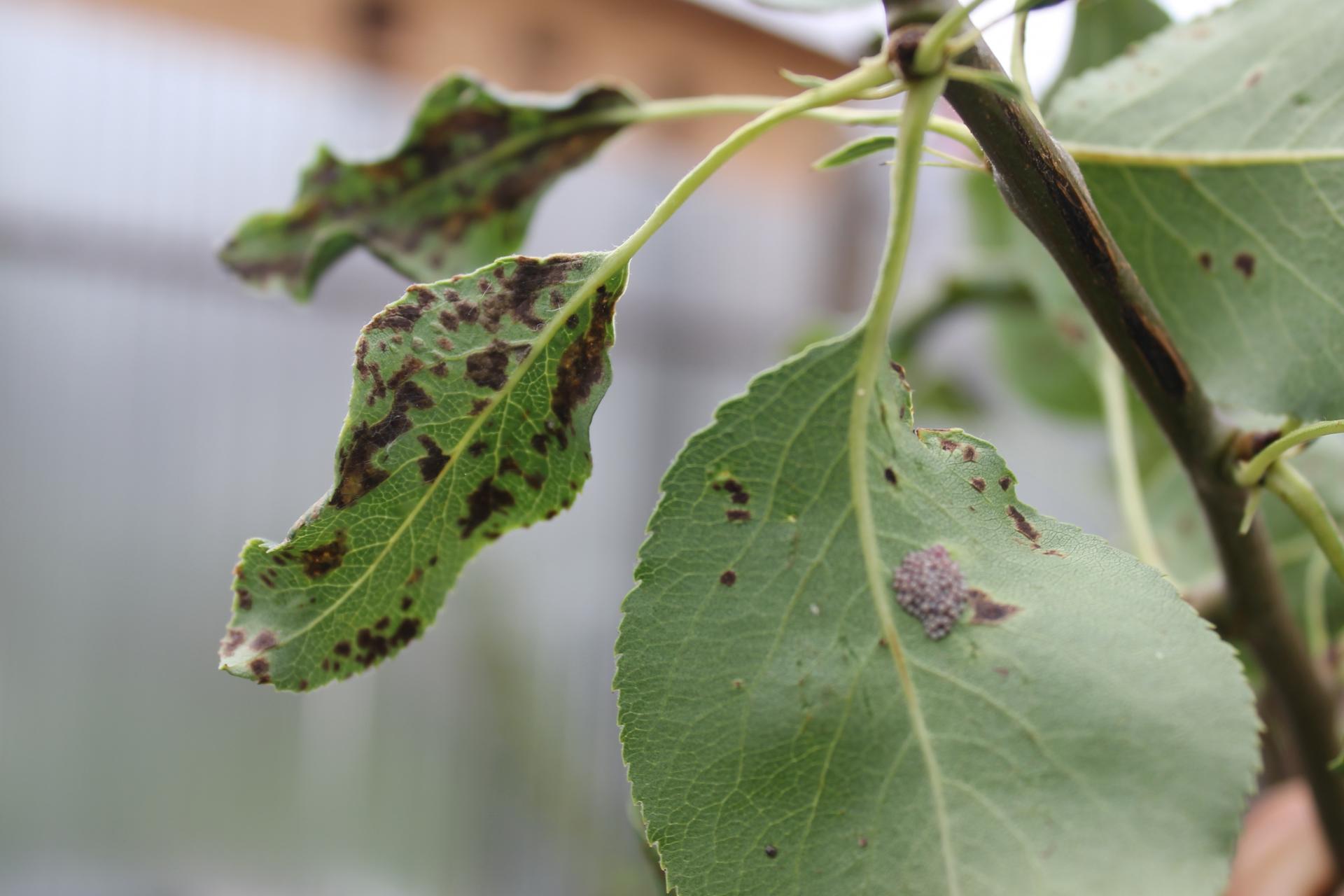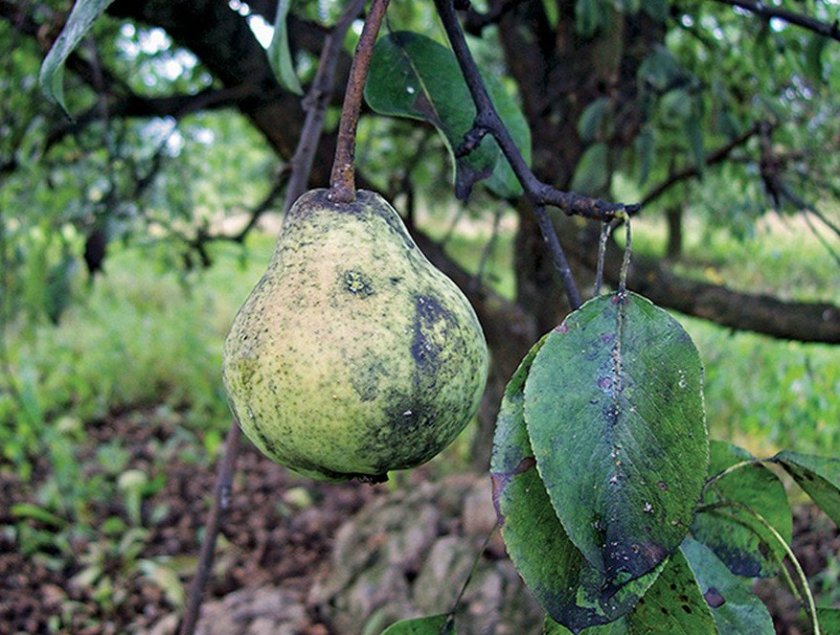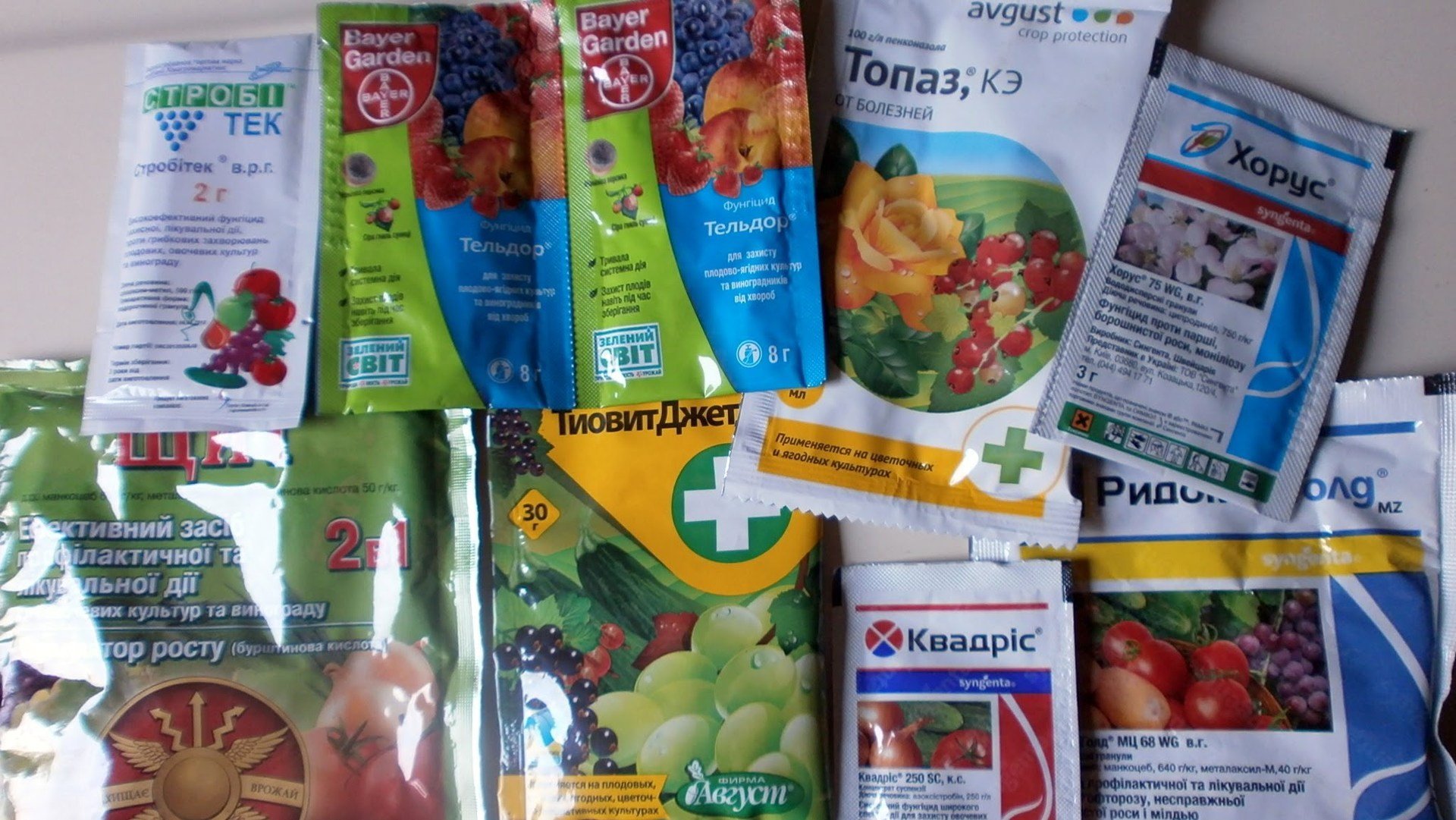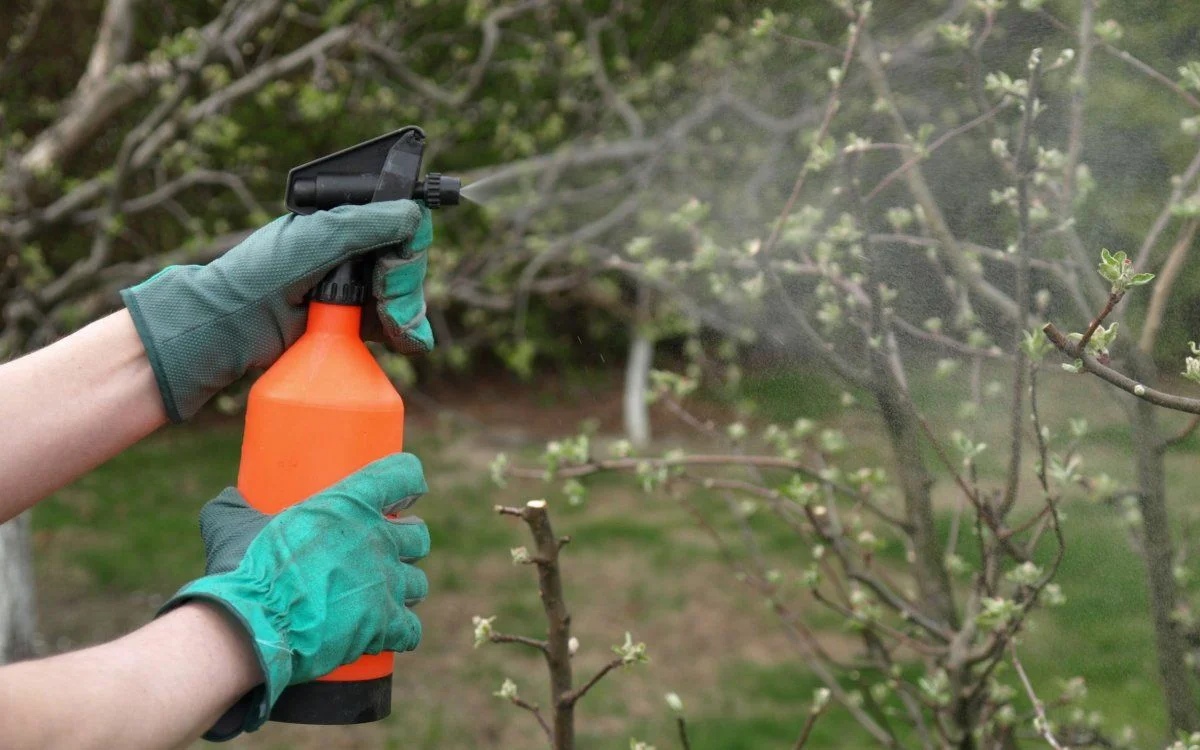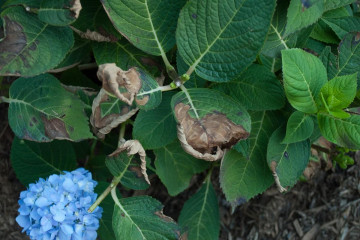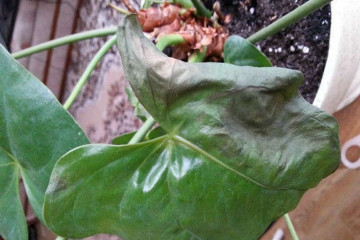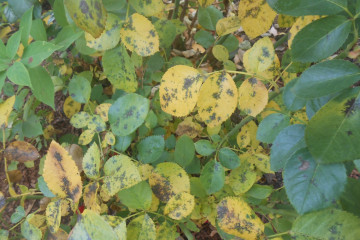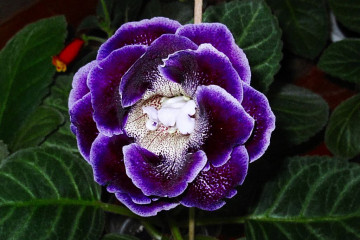The leaves of the pear curl and turn black: how to process
Content:
Only a lazy gardener does not dream of growing pear trees in order to obtain a rich and healthy harvest. But before the fruits ripen and are served as a delicacy, a certain time will pass, during which various misfortunes can happen. Those who closely follow the development of trees sometimes notice that the leaves of a pear are curling and turning black - how to process them in this case? This phenomenon is frequent, and no one is immune from it.
There are reasons for everything
The folding of leaves of pear trees is due to various reasons. To fix the problem, gardeners need to know what or who they are dealing with. The choice of an effective way of dealing with pathology depends on this. In one case, the plant simply does not receive proper care, in another situation, you may notice blackening of the leaves and their curling due to some kind of disease.
By studying the diseases and pests that most often affect the garden culture, you can avoid many serious problems. Small troubles are inevitable in any case, but at least they will not cause difficulties.
Failure to comply with the rules for tree care
Newbie gardeners, growing pears, often face troubles caused by improper watering. As a result, the soil becomes too dry or too wet.
Humidity above normal
Trees will grow and bear fruit normally only with regular, abundant watering. If the ground becomes excessively wet, the trees will start to rot. The best way to water is by sprinkling.
Dry periods and lack of essential nutrients
Lack of moisture negatively affects the development of plants, which also gives the leaves a reason to curl and turn black. In order to avoid drying out of the upper earthen layer, the soil of the trunk circles is mulched using:
- peat;
- weed grass;
- torn paper;
- tree bark;
- sawdust.
This helps to retain moisture for as long as possible, thus avoiding drought and keeping the trees healthy.
Attack of dangerous pests
When there are a lot of insects in the garden, the foliage of the trees is the first to suffer from their invasion. It is necessary to start the fight against unwanted visitors in a timely manner, otherwise you can forget about a healthy harvest.
Aphid
Not a single gardener is immune from such an army. Aphids begin their activity in early spring, and young seedlings and foliage, which can curl up, are under threat.
The first signs of an aphid invasion are visible immediately - the leaves curl up and darken, and the blackened foliage dies off. The favorite delicacy of pests is plant sap.
Gall mite
This insect tries not to be seen, but its presence can be noticed - it is given out by black marks on the leaves of the pear.
Medianitsa
This winged pest inflicts tremendous damage on pear trees.He especially loves young shoots, as well as leaves, which then darken and dry. In addition, insects secrete a sticky substance, which is a favorable environment for the development of a sooty fungus. Blackness threatens not only the foliage, but also the fruits themselves.
Fungal infections
This is a common reason why pear leaves turn black and curl. Three-year-old seedlings are often affected. Pathogenic microorganisms act as causative agents of fungal diseases. They are able to successfully overwinter in a suitable place:
- on infected fruits;
- in hollows and cracks;
- on diseased leaves.
Fungal infection is determined by rounded oily spots, yellow formations, and a gray-white bloom. Over time, the tips of the leaves curl, dry out, and their growth stops. Small black dots appear on the fruits, which subsequently grow, which leads to rotting of the crop.
Sooty fungus or rabble
This disease affects trees when flowering ends, or at the beginning of fruit ripening. A fungal infection can be easily identified by the dark bloom that covers the foliage. It is also present on the fruits themselves, which negatively affects their taste. A distinctive feature of a sooty fungus is that the spots are easily erased from the affected areas. This distinguishes the disease from scab or rot.
Among the reasons are the following factors:
- Too dense foliage that blocks air and sunlight.
- The garden plot is located in the lowland.
- Pear trees are not getting enough light.
- Pest attack.
Fungus infection often occurs after aphids or copperheads have settled on trees.
Black cancer (cytosporosis)
Another common disease of fruit crops, which in the language of many experienced summer residents is called "Antonov fire". First of all, the pathology affects the bark and branches of trees, but young shoots are most affected. If no action is taken, the leaves will turn black and the fruit will be affected. The appearance of small black spots on the bark, from which gum oozes, is a direct sign of cytosporosis.
From the point of view of experienced gardeners, it is completely impossible to cure the disease, but thanks to various means, it is possible to significantly slow down the development of pathology, or even stop it altogether.
Bacterial burn
Due to this disease, pear leaves also curl and dry. Infection most often occurs in hot weather with high humidity levels. Young ovaries and peduncles begin to darken before anything else. Then shoots, leaves are amazed.
The fire blight activity is highest in early summer (from late June to July). Spots spread rapidly throughout the foliage. A tree with severe lesions looks burnt. Therefore, the disease is called a burn. It is treated with an antibiotic.
Treatment methods and prevention
When the leaves turn black and curl on the pear, many gardeners think about how to treat the tree, because it is necessary not only to preserve the harvest, it is also necessary to take care of the fruit culture itself. Some diseases can destroy not one tree, but an entire garden, which will render the fruits unusable.
The most effective and at the same time aggressive technique is to remove infected plants (one or more) from the site. But if you wish, and also when the disease has not yet been started, there are several ways how you can preserve trees and return them to a healthy look.
Use of chemistry
The use of copper-based chemicals can effectively fight diseases that are caused by fungal pathogens. Experts recommend using Bordeaux liquid and copper sulfate. It is advisable to carry out the treatment course not only in the spring, but also in the fall.
After budding, it is advisable to treat pear trees with fungicides. Among all the drugs, the most effective are Topsin and Folicura. Such recipes are also effective:
- Take 350 g of quicklime, combine with 300 g of copper sulfate and dilute with 10 liters of water. Spray the trees with the ready-made composition until the buds open.
- A solution of copper sulfate (100 g of powder per 10 liters of water) should be used after the buds have bloomed.
- Mix Azophos - 30 g, Skor - 2 ml, Bayleton - 6 g, copper oxychloride and water - 10 liters.
As for insects, here insecticides will come to the rescue (Fufanon, Fitoverm). Only in advance it is necessary to remove infected leaves and fruits from trees.
Folk methods of dealing with the black scourge
Pests can be removed with a strong pressure of water - this is the simplest, but time-consuming way to get rid of unwanted neighborhood. For spraying foliage, it is advisable to add medical alcohol (70%) to the water. The procedure should be performed regularly for two weeks.
From the army of aphids, celandine tincture is effective. To prepare it, you need to take 5 branches of the plant, cut into small pieces and pour boiling water (1 bucket is enough). Then the mixture is infused for 5 days. The finished tincture is added to a container with water (10 liters) in the amount of 200 g. The pear foliage is sprayed with the finished composition 3-6 times at intervals of 1 time in 5 days.
To remove the fungus, a water-based solution (10 l) with the inclusion of soap (10 to 20 g) and soda ash (50-60 g) is suitable. An aqueous alcoholic solution is also effective (water and alcohol are taken in equal proportions).
To protect the trees from the aphids that are spread by the ant colony, it makes sense to wrap the pear trees in glue belts. As a last resort, flying insect tape can be used instead. This is an effective way to catch leafworm larvae, earwigs, and cap moths. These representatives can also be considered one of the reasons why the leaves of the pear turn black.
Agrotechnical measures
When the leaves of pear trees begin to curl into a tube, this is additionally accompanied by various "complications". Spots of various shades appear, plaque, shoots die off and other troubles occur. The presence of certain side effects allows you to determine what exactly the pear fruit crop needs.
It is worth closely monitoring the composition of the soil in the near-trunk circles and the condition of the fruit trees themselves. The necessary adjustments are made on the basis of observations. The introduction of the appropriate fertilizers in the right amount helps to increase the immunity of the garden culture, which will endow it with resistance to many diseases.
Nitrogen deficiency
It is replenished by adding ammonium nitrate to the soil. Previously, 20 g of the substance must be dissolved in water (about 10 liters - 1 bucket). Then the solution is poured under the root. The recommended hours for the procedure are evening time. At this point, moisture evaporates less. A weak urea solution can replace nitrate, only they need to process foliage.
Lack of phosphorus
When the foliage of the pear begins to turn red, this is direct evidence indicating a small amount of phosphorus intake. The problem is solved with the help of a small amount of Superphosphate with the inclusion of organic fertilizer introduced into the soil of the trunks.
To prepare the mixture, you need to take 10 kg of manure and mix with 15 g of the above-mentioned substance.
Low potassium
The amount of this element is adjusted by loosening each trunk circle around the pear tree. Further, the land is fertilized by the introduction of wood ash or potassium sulfate.
Calcium Replenishment
The lack of this element is noticeable in the leaves - they begin to roll up from the top. In this case, the trees are fed with lime. It will take 100 g of the substance, just before adding it, the soil around each tree must be loosened and poured with 2-3 buckets of water.
After a few days (from 2 to 4), the land is enriched with the introduction of potassium sulfate and mulched with humus.
Prophylaxis
The garden will look beautiful only if all the plants are properly cared for. In order for the trees to be healthy and strong, preventive measures must be carried out regularly, which is the key to preserving the harvest. Treatment of diseases can be delayed indefinitely, and the effectiveness can be extremely low. This proves once again the importance of taking preventive measures.
For prevention, it makes sense to carry out the following work:
- Trees can be protected from leaf rollers and a number of other pests with an elementary whitewash.
- It is necessary to regularly carry out sanitary pruning of the crown to avoid an increase in the level of humidity. After all, where there is more moisture, insects eventually settle.
- Regular watering, as well as the timely cleansing of the tree trunks from fallen foliage and fruits, is a good prevention against fungus.
The situation when the foliage of pear trees curls into a tube and darkens is very common. Any beginner who is just learning the basics of gardening can face this. Those with a wealth of experience in growing a variety of crops are also at risk to some extent. True, they know what to do and can provide valuable advice.
